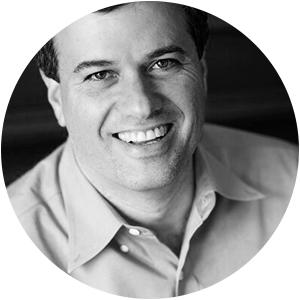Dear Sean,
I’ve been building my own design business for more than a decade and currently employ a team of six. I am proud of what I’ve accomplished—the work I’m doing and the name recognition I’ve established for myself and my firm.
Lately I’ve been reading about designers who have implemented succession plans for their firms. I’m a ways off from wanting to take a step back, but I know I’ll want to keep my firm’s name alive. I love my team, but don’t have any candidates in mind. How can I start this process now, long before I’m ready to put it into action? What should I be looking for in a potential successor—and when do I let that person know I’m interested in someday passing on my firm?
Looking for a Legacy
Dear Legacy,
Just contemplating who might take over your firm and why forces you to think about what your firm stands for and how that story is told in all of the work you do. After a decade, and with the team you have built, you are certainly in a position to answer the question. But the idea of legacy is such an amazing question—and to answer that question, you’ll need to go much deeper, almost to a granular level. Who are your clients? What did you do to build your business for them? How does it work?
My challenge to you (and all designers, really) is this: For the next month, you and your team must do the work to define your process. What does that mean? Anyone can write a description of their business as they wish it to be; what you need is a document that outlines your firm’s true values and reason for being. For every interaction with clients and production partners, and even among yourselves, answer the three Ws: Where are you? Where were you? And where are you going? Write it down. At the end of the month, you will have a very clear idea of how and why you do things—much more than any mission statement you might write.
With the process in hand, you must then identify the characteristics necessary to execute it well. A person who is good at X—what is their demeanor? A person who excels at Y—what makes them capable of executing the vision? How will a person whose strength is Z be able to move this process forward as the firm evolves? Again, write these characteristics down and pair them with the elements of your process that you value dearly.
When you’ve completed that task, you’ll know what kind of person(s) you want to carry on your legacy. The question then is how to make that happen structurally. You could sell your firm to these principal(s), but it sounds like your current team does not have the financial wherewithal to take on that role, and to be fully paid, you would be dependent on the ongoing success of your firm (without you). That is a tough spot to be in.
Alternatively, you can adopt the partnership model that has been trusted for succession in professional firms for a long time. Yes, it means that prospective partners will have to come up with some money when you are ready for them to buy in, but you can have a transition period in order to give them an opportunity to cement their position as a partner while you work your way out of the firm. And armed with your list of essential qualities and qualifications, you will be well positioned to seek that person (or people) out if you have not found them already.
One caveat: I do not believe in sweat equity in the context of transition. Life experience has taught me that if people do not have money at stake, the risk of loss is not real. You have to see it as yours and know the pain of its loss to drive feelings of ownership and entrepreneurship. If you never have to worry about your paycheck (or your job), it is incredibly difficult to be invested as though the firm is yours.
The proverbial “Put your money where your mouth is” matters here—a lot. You need someone whose professional identity is matched with their financial risk so that the legacy of all that you have built has the steward it needs. I realize this might sound harsh, but you bet the farm on your firm’s success when you opened your doors. Why would you want the person(s) following you to be any different?
The point of legacy is not just to carry on the name you started, it is to ratchet it up to new heights. Consciously creating a fire in the belly of the person you choose to do that work is a great way to ensure success.
____________
 Sean Low is the go-to business coach for interior designers. His clients have included Nate Berkus, Sawyer Berson, Vicente Wolf, Barry Dixon, Kevin Isbell and McGrath II. Low earned his law degree from the University of Pennsylvania, and as founder-president of The Business of Being Creative, he has long consulted for design businesses. In his Business Advice column for BOH, he answers designers’ most pressing questions. Have a dilemma? Send us an email—and don’t worry, we'll keep your details anonymous.
Sean Low is the go-to business coach for interior designers. His clients have included Nate Berkus, Sawyer Berson, Vicente Wolf, Barry Dixon, Kevin Isbell and McGrath II. Low earned his law degree from the University of Pennsylvania, and as founder-president of The Business of Being Creative, he has long consulted for design businesses. In his Business Advice column for BOH, he answers designers’ most pressing questions. Have a dilemma? Send us an email—and don’t worry, we'll keep your details anonymous.
Homepage photo: Shutterstock.com





























